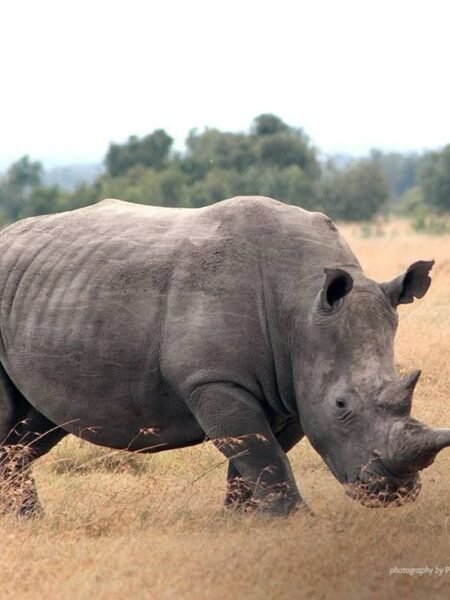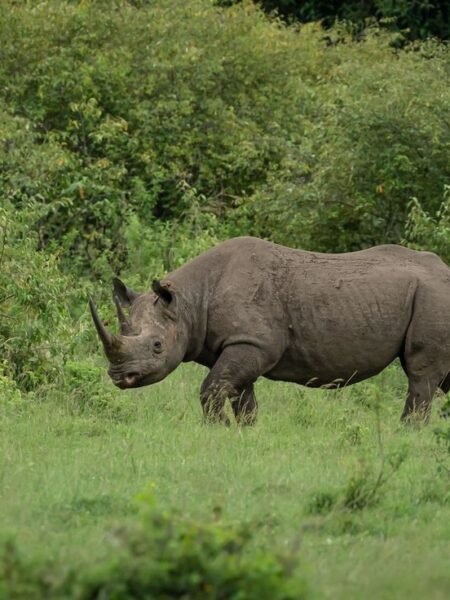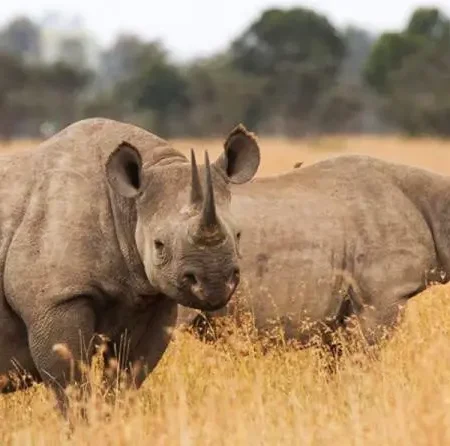
A glimpse of a Black Rhinoceros (Diceros bicornis) moving through the acacia-dotted savanna of Kenya’s Ol Pejeta Conservancy is a profound and increasingly rare wildlife encounter. These prehistoric-looking giants, critically endangered with only around 6,000 estimated individuals surviving globally, embody the fierce struggle for conservation. Spotting one here, especially a relaxed individual browsing on thorny bushes or moving purposefully with its distinctive hooked lip, is a privilege reserved for the patient and fortunate visitor.
Unlike their larger, grazer cousins (white rhinos), black rhinos are solitary, elusive browsers. They favour dense thickets, making clear sightings inherently uncommon. Ol Pejeta, however, stands as a beacon of hope. As East Africa’s largest black rhino sanctuary, it provides a heavily protected habitat where these magnificent creatures can thrive. Rangers patrol relentlessly against poaching, the primary threat fueled by demand for their horns.
Capturing such a sighting in photos is extraordinary. The images reveal the rhino’s powerful, armour-plated physique, its keen ears swiveling constantly, and the iconic double horns that tragically make it a target. The backdrop of Ol Pejeta’s sweeping plains, often with Mount Kenya looming on the horizon, underscores the significance of this protected haven. Sunlight glinting off its grey hide, dust kicked up by its deliberate steps – these photos freeze a moment of wild resilience.
Each photograph serves as a powerful testament. It showcases the success of Ol Pejeta’s intensive protection efforts and breeding programs crucial for pulling the species back from the brink. More than just a stunning wildlife image, it’s a visual plea, reminding us of the fragility of existence for Earth’s rarest giants and the unwavering commitment needed to ensure the critically endangered black rhino continues to roam the African wilderness. Witnessing one, even through a lens, is a humbling encounter with a true icon of conservation survival.










